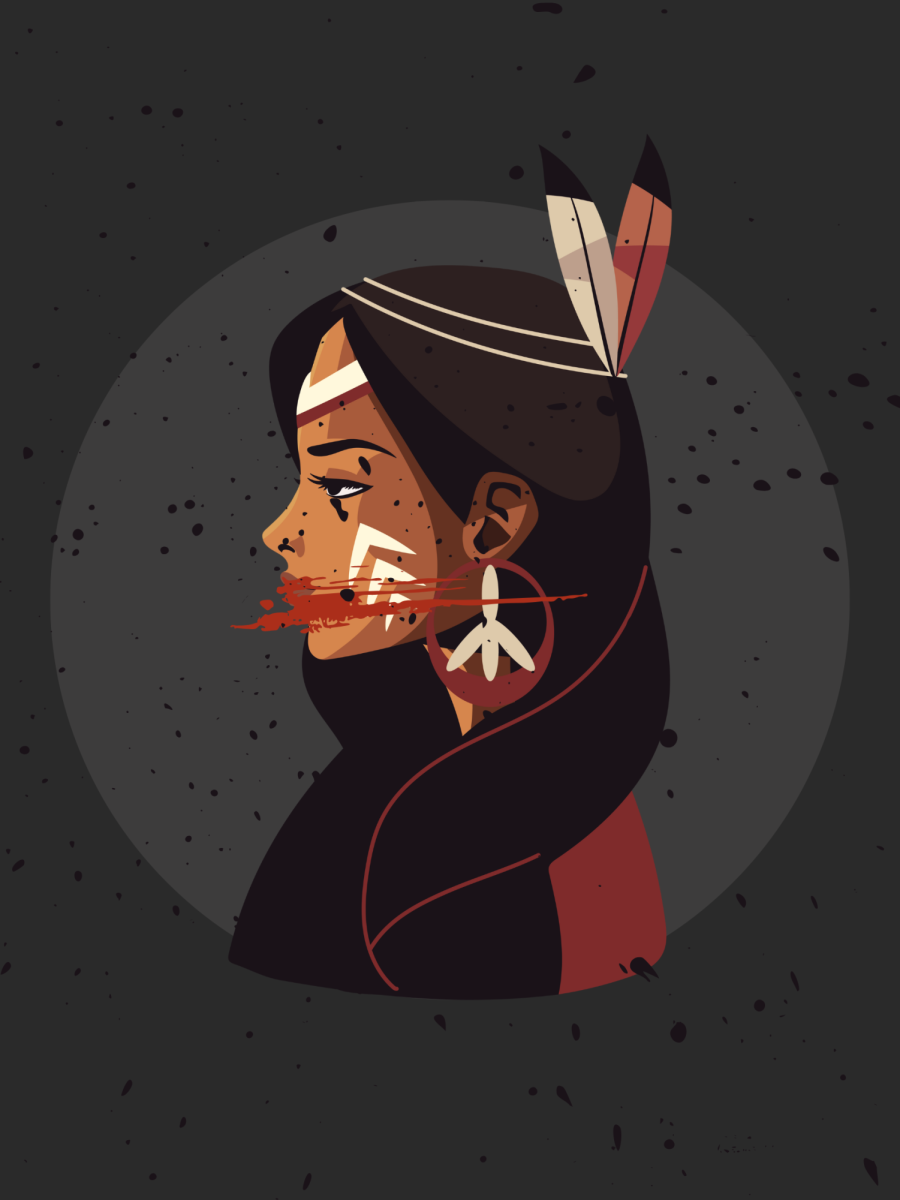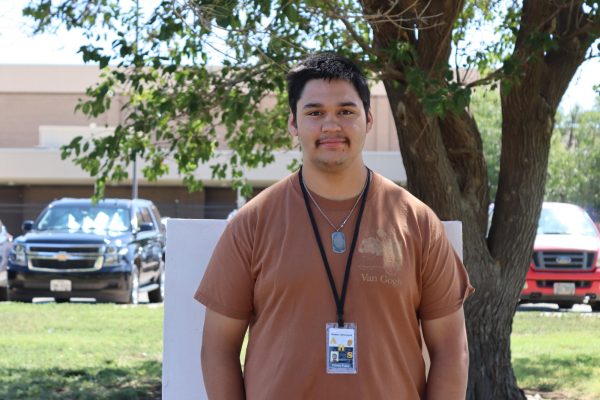The United States, a nation with over 300 million recognized citizens, has 3% of its population identifying as indigenous alone or simultaneously with another race. The United States built its backbone on the land the Indigenous ancestors irrigated, worshiped and protected for millennia. Native Indigenous Americans experience the highest violent crime rates per capita nationally than any other race. Since the Spanish arrived in 1492, Indigenous people have suffered systematically, often silently, and have been exploited for their land, bodies, culture and even children. The Lucayan Taino, or Lukku-Cairi as they called themselves, became nearly eradicated by the year 1520 after the Spaniards enslaved them, sickened them with diseases they could not survive, or blatantly massacred them. The Taino identity groups that exist today, the last remnants of the Lukku-Cairi, have yet to receive recognition from the U.S. Government.
American education changed and manipulated Native American history to appear more palatable and acceptable, as if history could change. For example, the story of Thanksgiving. Instead of a celebratory feast for the Wampanoag, Thanksgiving became a tense dinner followed by the Pequot Massacre of 1637, and the King Philip’s War (1675-1676), marking the beginning of the three centuries of Native people’s suffering, the forced displacement of those who survived and forced assimilation of their children, as a shamelessly perverse form of thanks from the colonizers for the Wampanoag’s generosity and “alliance”. Native Americans know Thanksgiving as the beginning of death and loss, not a family dinner with a stuffed turkey. Suppose this part of America’s history appears uncomfortable. In that case, it becomes society’s job to teach it, because the truth only appears uncomfortable to the people who continue to benefit from the Indigenous exploitation.
The suffering for Native Americans did not end, it evolved. Indigenous people still get murdered, names get anglicized, tribes get forgotten or assimilated, and the word “Indian” still misrepresents the millions of complexly different Indigenous individuals and nations just fighting to exist.
Today, Native Americans experience violent crimes and injustice more than any other race. Of Native women, 84% have reported experiencing physical assault and 56% reported sexual violence. Indigenous people experience murder at rates 10 times higher than the national average in certain jurisdictions. Over 50% of all violent crimes against Native Americans go completely unreported, and in tribal communities, that number rises to a staggering 70%. Of all the crimes reported, 95% remain completely uncovered by the media.
The crisis of missing and murdered women remains one of the U.S and Canada’s most significant and most neglected issues. The National Crime Information Center reported 5,700 missing American Indian and Alaska Native women and girls in 2016 alone. In Canada’s British Columbia, where 49% of indigenous homicide cases remain unsolved, the Royal Canadian Mounted Police officially recognizes 18 cases of murdered or missing women along Highways 16, 97, and 5 in British Columbia, dating from 1969 to 2006. However, Indigenous communities estimate the number of victims along the 700 km (approximately 435 miles) stretch of Highway 16, known as the ‘Highway of Tears,’ to have reached over 40, reflecting concerns about underreporting and the limitations of official investigations, leading to absolutely no justice. One victim, not related to Highway 16 but equally as uncovered and ignored, Jaime Yazzie, a 32-year-old Navajo woman, who went missing in Pinon, Arizona on June 30, 2019. Investigators discovered her remains two years later in November 2021 on the Hopi Reservation. Another woman, Anna Mae Aquash, a prominent member of the American Indian Movement, became the victim of murder in 1976 after being accused as an FBI informant. Roger Amiotte (A rancher and member of the Oglala Lakota Nation) found Aquash’s body in a major state of decomposition in South Dakota. Two decades later, two men received convictions, but the absence of an investigation regarding institutional or even governmental involvement remains a neglected issue. Emily Pike, another stolen sister, only 14 years old and a member of the San Carlos Apache Tribe, was reported missing in Mesa, Arizona, on January 27, 2025. Eighteen days later, the Gila County Sheriff’s office found her body in large trash bags off Highway 60 near Globe, Arizona. Only three names, out of thousands of Indigenous women murdered in cold blood, without anyone reporting the crime. Indigenous women experience the highest homicide rates in the country, passing Hispanic and Caucasian women by three times, but in certain counties, their reported cases exceed ten times that of the national average, with most of their cases never reported at all.
Indigenous people do not only have blood shed on their land, but the land itself remains actively stolen. The Dakota Access Pipeline (DAPL), a 1,172-mile underground pipeline designed to transport crude oil from the Bakken Formation in North Dakota to Patoka, now does not just threaten to destroy Indigenous land, but it pierces it without the consent of the Sioux Tribe, who rightfully owned that land for millennia. Energy Transfer Partners, a Texas-based oil corporation, built the pipeline on Sioux land. The corporation’s CEO, Kelcy Warren, a billionaire oil executive, not only ignored the Sioux’s autonomy but also completely ignored widespread national protest as he drilled into sacred land he never had a claim to. The Pipeline did not just cross the Sioux Reservation land; it crossed the Missouri River, the tribe’s primary water source. The Sioux, protected by the centuries old Fort Laramie Treaty, had their land robbed by the U.S. Army Corps Of Engineers, which approved of the construction without proper tribal consultation, violating the treaty signed generations ago. A treaty meant to protect Indigenous land, tossed aside for oil.
Slaughtered, displaced and assimilated from 1492 to now. The history has not only repeated, it has evolved into a silent, persistent attack on the people who lived here in the first place. Indigenous people will remain here; they will not disappear. Their voices grow louder, even as their numbers get systematically poached,killed for their land, their bodies and their resistance. Native Americans, and American Indigenous people in general, fight a silent battle every day just to exist. Organizations like the Missing and Murdered Indigenous Women, Girls, and Two-Spirit (MMIWG2S) organization fights to bring light to victims and American Indian Movement (AIM) not only fights to protect every Native American,but they also fight to preserve culture, language, and the last scraps of their land that the colonial American government was generous enough to “give” them. Indigenous Americans will not disappear, not through stolen land nor the extinction of the Buffalo, and simply acknowledging their history and their existence is a small step towards Indigenous liberation that people today have the power to do. Will they stand on the sidelines, continuing to benefit, or will they choose solidarity?
Citations:
- Native American Population Statistics
- U.S. Census Bureau. (2020). Race and Hispanic Origin in the United States: 2020 Census Results.
https://www.census.gov/library/visualizations/interactive/race-and-ethnicity-in-the-united-states-2020-census.html
- Violence Against Native Women and General Victimization
- Rosay, A. B. (2016). Violence Against American Indian and Alaska Native Women and Men. National Institute of Justice.
https://nij.ojp.gov/library/publications/violence-against-american-indian-and-alaska-native-women-and-men-2010-findings
- Underreporting and Per Capita Crime Statistics
- U.S. Department of Justice / Bureau of Justice Statistics. (2004). American Indians and Crime: A BJS Statistical Profile.
https://bjs.ojp.gov/content/pub/pdf/aic02.pdf
- Emily Pike Case
- Arizona Mirror. (2025). San Carlos Apache tribe demands investigation into group homes after Emily Pike’s murder.
https://azmirror.com/briefs/san-carlos-apache-tribe-demands-investigation-into-group-homes-after-emily-pikes-murder
- Media Silence on MMIWG
- Urban Indian Health Institute. (2018). Missing and Murdered Indigenous Women and Girls: A Snapshot of Data from 71 Urban Cities in the U.S.
https://www.uihi.org/wp-content/uploads/2018/11/Missing-and-Murdered-Indigenous-Women-and-Girls-Report.pdf
- Jaime Yazzie Case
- U.S. Department of Justice. (2022). Man Sentenced to Life in Prison for 2021 Murder of Jaime Yazzie.
https://www.justice.gov/usao-az/pr/man-sentenced-life-prison-2021-murder-jaime-yazzie
- Anna Mae Aquash Case
- New York Times. (2021). Anna Mae Aquash Murder Case Timeline and Investigations.
https://www.nytimes.com/2021/03/25/us/anna-mae-aquash-murder.html
- Highway of Tears/Canada Case Statistics
- Native Women’s Association of Canada. (2010). Fact Sheet: British Columbia Missing and Murdered Aboriginal Women and Girls.
https://www.nwac.ca/assets-knowledge-centre/2010-Fact-Sheet-British-Columbia-MMAWG.pdf - EBSCO Research Starters. (2023). Highway of Tears Overview.
https://www.ebsco.com/research-starters/law/highway-tears
- Dakota Access Pipeline and Treaty Violation
- National Geographic. (2016). What You Need to Know About the Dakota Access Pipeline Protests.
https://www.nationalgeographic.com/culture/article/what-you-need-to-know-dakota-access-pipeline-protest - Washington Post. (2017). Why Native American Treaty Rights Matter in the DAPL Debate.
https://www.washingtonpost.com/news/monkey-cage/wp/2017/02/08/why-native-american-treaty-rights-matter-in-the-dakota-access-pipeline-debate/
- General MMIWG Statistics and DOJ Records
- The Guardian. (2021). 5,712 Native women reported missing in 2016—but only 116 logged by the DOJ.
https://www.theguardian.com/us-news/2021/oct/15/missing-native-women-indifferent-police-media


